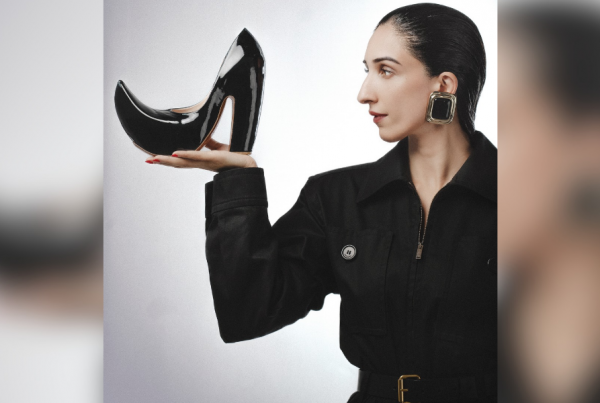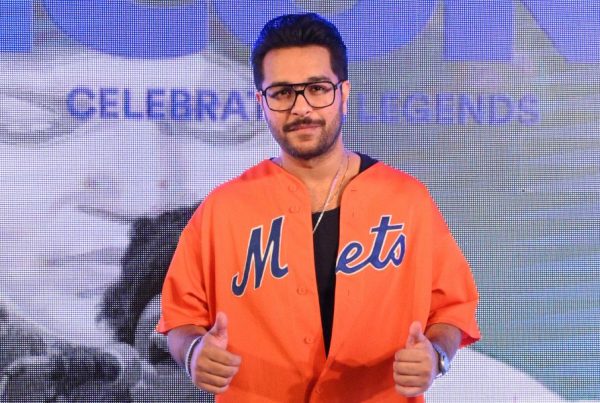Wedged firmly between New York and London Fashion Week, Fashion Pakistan Week was fashionably on time; it simply is not fashionable to be late anymore! FPW Winter/Festive got its timing spot-on, as designers projecting trends for winter 2017 were ready to move into action for the upcoming festive season. A runway to retail exercise was also driven into motion, with several designers taking their collections to multi-label boutique Ensemble the very next day. Fashion Week found itself a new abode and designed itself a new catwalk that seemed to say that things are back in business. The game changer was the opening and closing shows, Shamaeel and Sana Safinaz respectively, that were hosted in exclusive spaces that allowed the larger than life collections their due points of elevation. From that vantage point, fashion week was most definitely looking good.
It was evident that FPW has evolved. Unfortunately, it was just as obvious that most fashion designers showing (or more significantly not showing) have not.
The wonderful this winter
Winter/Festive is an interesting concept that the Fashion Pakistan Council introduced several years ago; it allowed designers the choice to show collections that worked for their business, be it wedding wear or party wear. Unlike the west, Pakistan does not have a very evolved winter fashion scene. The W/F concept allowed for diversity and it justified the fact that Shehla Chatoor showed magnificent bridals alongside Maheen Karim, who showed an exciting array of high end party dresses that would end up at the annual Sindh Club Ball.

Wardha Saleem
Working with that memo, one saw Wardha Saleem design a flamboyant Dholak collection for the upcoming wedding season. Misha Lakhani brought her classic aesthetic to the runway with a collection that was sophisticated but at the same time very sexy chic. Sanam Chaudhri’s jewel palette was diverse enough to be taken to both wedding and party; a definite Pandora moment there. And Adnan Pardesy’s play on the word Rivayat lent an exciting edge to tradition; there was unconventional colour play as well as intricate detailing in his collection. Maheen Khan made a comeback with a collection that, like true fashion, was dependent on style and silhouette instead of embroidery and embellishment. The gharara sari she introduced was another level of design! Similarly, Sadaf Malaterre worked on a dark, non festive palette for a collection that had zero embellishment.
For each and every show, the well-executed hair and makeup by Nabila’s creative team at N Pro provided just as many hair and makeup trends as the collections did. Fashion and beauty do go hand-in-hand at fashion week!

Maheen Khan
Newly appointed Chairperson of the FPC, Deepak Perwani managed to put up a retail friendly collection alongside organizing and getting this show on the road; his well-fit cholis were a sight for sore eyes. And while designers like Saira Shakira, Emraan Rajput, Nauman Arfeen and Tena Durrani did not manage to win one over completely, they did bring enough oomph to the runway to merit their slots.
Two winter wonderlands created for the opening and closing of fashion week were game changers that the council should now play with. Shamaeel’s exclusive showcase for the opening of FPW was a curated show that combined installations with fashion in motion on the catwalk and made for an experience that allowed art to transcend into fashion and vice versa. Sana Safinaz presented the grand finale of FPW and their show took admirers into an Eden of bridal couture. Sana Safinaz introduced menswear and brought back the signature oomph that was Sana Safinaz’s strength until lawn and pret took over. This was an ode to gorgeousness and it was a befitting grand finale to fashion week.
The washed out and not so fashion forward
There were designers that lived up to expectations and there were those that appeared to have gotten a memo for Bridal Couture Week, because they just brought out their heaviest wedding wear. One does admit that there is limited room for exploration in bridal couture but then there are ways to make shaadi-wear runway friendly; there can be introduction of trends, new colour palettes and revivalism. Excitement has to be generated. There’s a reason why Shehla Chatoor, Nomi Ansari, Ali Xeeshan, Fahad Hussayn, Zara Shahjehan, HSY, Karma, The House of Kamiar Rokni, Mahgul, Faraz Manan and ultimately Elan always put up memorable couture shows, even when showing bridal couture. FPW needs to get more of these names onboard, ultimately replacing the mundane labels that only serve the purpose of filling up slots and/or paying the bills. We saw too much of that slump on Day One of FPW. A shorter and crisper lineup would have been preferable.
Agreed, designing a bridal couture collection is both expensive and time consuming but designers seemed to have forgotten the need to make their shows memorable. There were no creative press kits, goody bags or party favours this year; one can’t compare but Tom Ford did send out bottles of his new perfume (with an unmentionable ‘F@#king’ name) with his show invites at NYFW this year. Fashion week needs to be more of an experience, with designers challenged and motivated to make a bit more of an effort to stand out. There were very few gimmicks or wow moments in shows, which brings one to the next point of dispute – the evolution of the runway.

Adnan Pardesy
What exactly is a fashion show these days?
The conventional description of a classic catwalk – one that showcased 90 sharp outfits of a collection in straight file – has changed. Fashion shows are no longer just about straight ramp anymore. Just looking at NYFW, there was just about every improvisation under the sun. Ralph Lauren hosted his show in his personal garage full of vintage cars. Philip Plein’s show was a 1000-person party in which burlesque artist Dita von Teese performed inside a giant Martini glass and Rihanna sent her collection out on dirt bikes that whizzed over pink sand dunes.
“Alexander Wang brought the fashion set to Bushwick, Brooklyn for a Spring 2018 runway staged on the street,†Harpers Bazaar reported. “Models, led by Kaia Gerber, entered the runway via a WANGFEST tour bus. As for the after party? There were performances by Cardi B, Ashanti and Ja Rule along with a bouncy house, donut towers, an ice bar, cocktail juice pouches, and an inflatable pool filled with bottles of Budweiser.†Oh, and all this was for pret, not couture.
What made Pakistan’s designers decide that simply sending out a collection (not always a good one) was enough? In this internet day and age, when front rows full of bloggers and Snapchatters are eager to document every shimmy of excitement, how could designers think they could get away by providing none? With the exception of Shamaeel, Sana Safinaz and Wardha Saleem, there was almost no change in tempo and that needs to change with the times. As a result, collections that were different stood out even more ostensibly. Maheen Khan and Sadaf Malaterre, being two prominent cases in point.

Sadaf Malaterre
It also made the little sponsored surprises ever more welcome. The Lux VIP Lounge became a great post-show hang out, where the media discussed shows over coffee and cottage cheese on rye. Satay sticks, kebabs, fruit and cheese complemented by a spread of (unfashionable yet sinful) sweet treats completed the buffet every day. The Magnum Bar was another people magnet; most people would rather embellish their ice-creams than see more embellished Christmas treats on the runway.
The new runway, one has to say, was not too compelling. Sitting in the front row assigned to media, one could not see the full expanse of the catwalk or of the audience sitting around it. This two-headed runway was not needed.
To cut a long story short, a fashion show and collectively speaking, a fashion week needs to be an experience. The council can only provide the platform – which it did. It is up to the designers to make use of that platform. They need to show; if not twice then at least once a year. If not in Karachi then in Lahore, but their work needs to be visible for them to be relevant. If the best of Pakistan’s designers decide that they’d rather sit fashion week out in favour of a new store, a lawn collection or an international appearance, then Pakistan’s fashion industry will suffer and ultimately, the loss will be theirs.Â
- FPW Photography by Faisal Farooqui @ Dragonfly
Â





